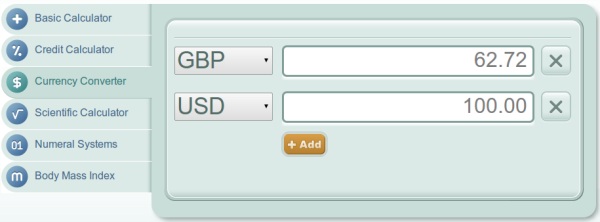
In order to conduct the ex-post analysis, it’s important to choose the type of asset class in question, then use regression analysis to figure out the potential for gains or losses. For example, if the Fed raises interest rates, we can only know if the decision was right or wrong when the predicted outcome happens. If the increased interest rates and global recession pushed the economy into inflation, it might mean that raising the interest rates was a wrong decision. However, if the economy is still stable and performing above board three to five years later, it means that the Fed’s decision to raise interest rates was appropriate and timely.
Disaster Risk Reduction Financing in Asia and the Pacific: Scoping … – ReliefWeb
Disaster Risk Reduction Financing in Asia and the Pacific: Scoping ….
Posted: Tue, 08 Aug 2023 10:21:22 GMT [source]
Ex-ante is a Latin term meaning “before the event” It is the anticipated return on an investment or the earnings that an individual expects at the end of a given period. However, economists (such as Krugman) are critical of the decision to raise interest rates. Typically, access is provided difference between ex ante and ex post investment across an institutional network to a range of IP addresses. This authentication occurs automatically, and it is not possible to sign out of an IP authenticated account. In finance, this refers to anything that occurs before market participants become aware of the pertinent facts.
Chapter 2: National Income Accounting
After the occurrence of a predicted event, the predicted outcome (ex-ante) can be compared to the actual outcome (ex-post). The ex-post information allows the investment company to evaluate how they actually performed as opposed to how well they planned to achieve the outcome. The actual outcome can also help the investor refine their prediction process and get additional insights on how to make the predictions closer to the actual outcome.
In that manner, ex-post risk refers to risks that take place after the fact by accounting for historical returns as a base or guideline. It involves the analysis of actual historic return streams to ascertain the variability of that return stream over time. This kind of analysis looks at the risk of current portfolio holdings and estimates future return streams and their projected variability based upon statistical assumptions. An example of ex-ante analysis is when an investment company values a stock ex-ante and then compares the predicted results with the actual movement of the stock’s price. When the predicted event (ex-ante) occurs, analysts can compare the actual outcome (ex-post) and the predicted outcome to see how accurate the prediction was.
Examples of Ex-Post Risk
The term ex-ante refers to future events that are based on forecasts or predictions rather than concrete results. Ex-ante can be used to describe the potential returns of a particular security or company. Much of the analysis conducted in the markets is ex-ante, focusing on the impacts of long-term cash flows, earnings, and revenue. While this type of ex-ante analysis focuses on company fundamentals, it often relates back to asset prices. Predicting the expected returns of a security or investment is often a difficult task, especially due to the unpredictability of the market. Some analysts may attempt to account for expected variables in the market, but the predictions may sometimes miss the targets due to external shocks that affect the financial markets.

When new regulations are imposed, sometimes pre-existing businesses are exempt and sometimes not. In accident law, negligent behaviour by the first actor may require the second actor to take action beyond the ordinarily efficient actions as can be seen in the doctrine of last clear chance. Rights typically go to the highest bidder, but at 4-way stop signs, rights are granted according to who was there first. In other areas involving traffic, being first accedes to other criteria such as majority rule.
Viewing your signed in accounts
By making the prediction of the outcome, the obtained ex-ante value can then be compared to the actual performance when it happens. Investors can use the ex-post data to get the actual performance of a security, without including any forecasts or projections that may be affected by market shocks. The ex-post value of a security can be obtained by deducting the price paid by investors from the current market price of the security. Unlike ex-ante, which is based on estimated returns, ex-post represents the actual results attained by the company, which is the return earned by the company’s investors.

The actual or realized investment, on the other hand, Ex-post or actual investment is the measurement of a time (e.g., a year) after the fact, when more investment is required. It should be emphasized that Keynes included stocks of unsold products in his investment calculations. To put it another way, an ex-ante investment is one that is planned or wanted before it is made, whereas an ex-post investment is one that is made after it has been made. As a result, the real investment may differ from planned investment due to unforeseen inventory additions or reductions (stock of goods). This component of ex-ante and ex-post investment is taken into account while determining National Income.
Ex-Ante and Ex-Post Analysis
One of the key factors about the ex-ante interest rate is that it isn’t adjusted for inflation. First, let’s suppose Company ABC is expected to report earnings on a certain date. An analyst at a research firm will use economic and financial data from its past and present operating conditions to make a prediction regarding its EPS.
- The ex-post value of a security can be calculated by subtracting the price paid by investors from the security’s current market price.
- These analyses are used in fields like predicting investment returns or company earnings.
- It is imaginary (intended), in which a firm assumes the level of investment on its own.
- National income and employment will continue to increase until equilibrium is restored, that is when savings equal investment.
- When transcribed from Latin, ex-ante is the prediction of a particular event in the future, such as the potential returns of a company.
Let’s say the central government of a country makes an ex-ante prediction on the inflation of the country, and there are chances that the inflation rate will increase shortly. The prediction can be of a business’s specific good or commodity, a business unit, or the complete corporate entity. It is imaginary (intended), in which a firm assumes the level of investment on its own. For full access to this pdf, sign in to an existing account, or purchase an annual subscription. For librarians and administrators, your personal account also provides access to institutional account management.
Prior to accepting a position as the Director of Operations Strategy at DJO Global, Manu was a management consultant… This content was originally created by member WallStreetOasis.com and has evolved with the help of our mentors. After this, an evaluation of the changes in the value and the revenue generated by the asset is done. If the inflation will be stable after a certain period, that means the policy was appropriate.
Ex-Post Forecasting
Here you will find options to view and activate subscriptions, manage institutional settings and access options, access usage statistics, and more. Some societies use Oxford Academic personal accounts to provide access to their members. Shibboleth / Open Athens technology is used to provide single sign-on between your institution’s website and Oxford Academic.
The analysis is the process of gathering, collecting, and analyzing data or information. After researching it, analysts develop a theory or conclusion based on the information presented. The institutional subscription may not cover the content that you are trying to access. If you believe you should have access to that content, please contact your librarian. A personal account can be used to get email alerts, save searches, purchase content, and activate subscriptions.
It also allows analysts to assess how well they performed in comparison to the goal they set out to achieve. National income and employment will continue to increase until equilibrium is restored, that is when savings equal investment. However, the change in national income will be greater than the change in investment. So, for both firms and the economy, ex-ante and ex-post investments are equally important to be taken into the account. Analysts and investors can use any historic returns to make predictions about the future performance of investments and companies.

The difference between the two outcomes can provide additional insights on how to streamline the prediction process to make it near-accurate. It also helps the analysts to analyze how well they performed compared to the outcome they originally planned to achieve. The ex-post investment is the investment of a period [e.g., a year] that is measured after the fact. It’s important to remember that sometimes investments are made that weren’t originally planned or intended. When unsold completed items amass owing to low sales, unplanned investment occurs. As a result, an economy’s real investment is the sum of planned and unanticipated investments.
